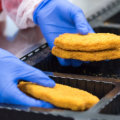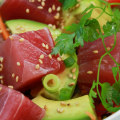Conventional food systems are the most common type and usually include the production of food and the preservation of hot and refrigerated foods before serving them. Conventional food systems can cook all of their food from scratch, or they can purchase partially prepared or fully prepared foods. If Rick chooses a conventional food system for his facilities, this would mean that he would have greater flexibility in menus and higher food quality; however, conventional food systems have higher food and labor costs associated with conventional food systems. Police station food systems, also known as centralized food systems, occur when central kitchens create a large quantity of food that is transported for service to other smaller kitchens.
This type of food system is more effective on a large scale, since food can be purchased in bulk for less money. However, the temperature and packaging of the food being transported must be controlled to protect food safety. If Rick chooses an economato-type food system for his health center, this will allow him to use less labor and better consistency of the food served. However, it can create monotony at work, as employees often complete tasks similar to those of an assembly line and transportation costs can be high.
Prepared food systems, also known as cooking and cooling systems, are food systems that prepare food and cool or freeze it, and then reheat it when it's time to serve it. In this type of food system, employees can purchase partially prepared or fully prepared food. If Rick chose a prepared food system for his health center, he could schedule food preparation at convenient times and batch cook large quantities of food that could be reheated later. However, this may limit the availability of the menu, as fresh products would not be ideal for this type of preparation and preservation.
Food safety could also be a cause for concern, since such large batches of food are prepared at once. Food during this service is prepared next to the table. Hot foods are cooked on a rechaud (hot plate) that is on a gueridon (small table). Cold foods, such as Caesar salad, are assembled only in the gueridon.
The waiters place the finished foods on individual plates and serve them to guests from the right. This is the only style of service in which food is served from the right). Some foods, such as desserts, may already be prepared. They are shown on a cart, the cart is placed next to the table and served to guests after making their selection.
This style would only be used for small VIP groups. Food is cooked next to the table, as is the French trolley service, but instead, waiters put food on plates and then pass it to the table. Guests serve themselves food and prepare their own dishes. For example, in the current environment, it is very difficult to find the right workforce, forcing school food service managers to consider alternatives in food production.
Many food service facilities may have combined food production systems to meet all of their customer needs. Most food service managers inherit a food service system, but they can make modifications to that system or select and build a new system. A food cooking system with a display is a system that allows customers to see the actual preparation and cooking of food, which can increase customer interest and sales. Food service managers are responsible for the daily operation of restaurants and other establishments that prepare and serve food and beverages.
In conventional food service systems, ingredients are assembled and food is produced on site, kept warm or cold, and served to customers. There are many different types of food and beverage services or procedures, but the primary category of food service is dish service, cart service, dish service, buffet service, and family-style service. Rick knows that this type of food system can better engage with customers and create new customers, but it may have higher food and labor costs. In addition, there is great concern for food safety, including the implementation of the Hazard Analysis and Critical Control Points (HACCP) program and quality control that could be improved in centralized food production.
Food assembly and service systems refer to a type of food production that begins with partially prepared or fully prepared foods, which can then be slightly modified or divided into portions before serving. . .







Leave Message